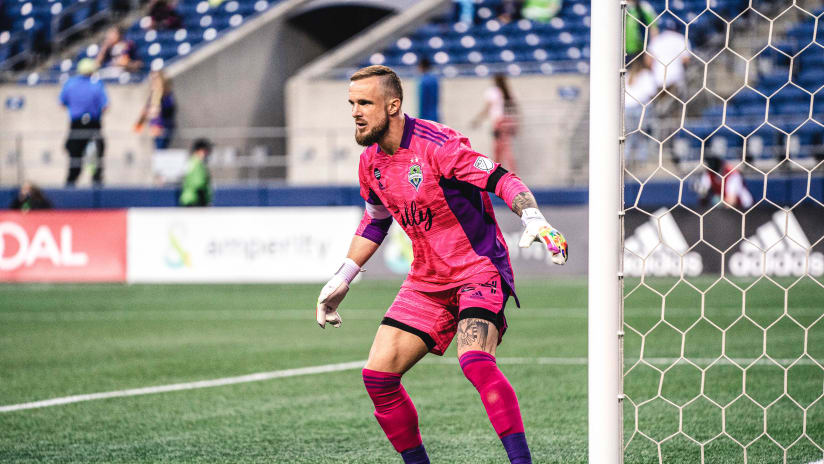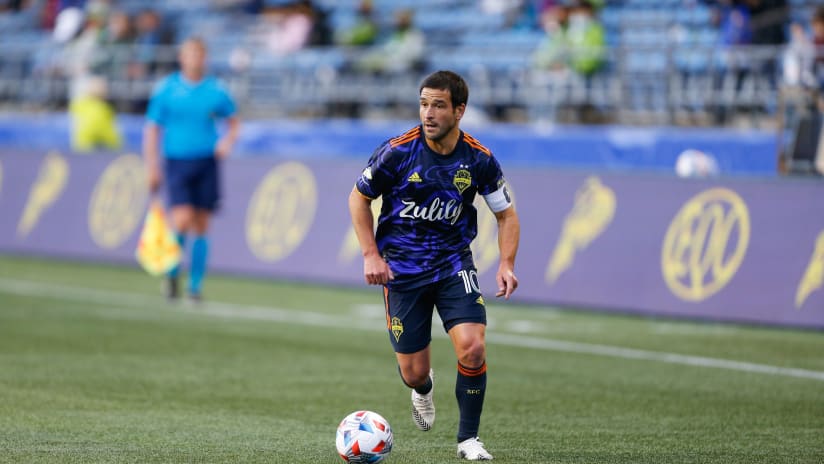It’s official. Nicolás Lodeiro is a Sounder.
For what seems like a relative eon, the Sounders have wrangled over Lodeiro’s signing, a saga that took a number of twists and turns that almost dumped the whole process over the cliff face. Sounders General Manager & President of Soccer Garth Lagerwey noted earlier this week that Lodeiro has been No. 1 on their acquisition board for some time.
Pulling off a transfer of that magnitude was not easy. Signing well-known players from South America, let alone players who’ve featured for their national team as recently as this summer, can be a rollercoaster affair. But the Sounders did it. And here we are.
There’s been so much emotional capital spent on the will-he-or-won’t-he part of the equation that it’s almost easy to forget Lodeiro’s work has only just begun here. There is indeed a player, with all the attendant strengths and weaknesses, underneath all the transfer talk. The Sounders pegged the Uruguayan as such a pivotal target precisely because he fills unarguably the team’s biggest need.
- FAST FACTS: All you need to know about Nicolás Lodeiro
He is a chance creator. And to know exactly what that’s important, you have to travel back in time.
Before joining the Sounders, Lagerwey spent eight years in the same role as the personnel guru for Real Salt Lake. When he started at the club in 2007, Lagerwey was himself a hurricane of motion that summer, ripping up the club’s previous faulty playbook and installing an entirely new vision. RSL had been one of the worst teams in the league, and they were about to get a facelift.
Free to wheel and deal, Lagerwey helped build the foundations of a club that would make eight consecutive playoff appearances, capture an MLS Cup and come within 45 minutes of winning the CONCACAF Champions League.
The build process that summer started with a few players, but one in particular. It started with Javier Morales.
Morales joined RSL from South America that summer, and the rest is history. The Argentine developed into the most unerringly consistent No. 10 in MLS history, providing avalanches of assists and acting as the attacking ballast for the team’s sprint into MLS relevance.
In the context of Lodeiro, the important thing to note is that the league’s best teams rotate around creative attacking midfielders who operate in central channels. Their scarcity in MLS gives them added gravitas, and the teams blessed enough to house names like Valeri and Piatti and Morales and Diaz aren’t likely to take the honor for granted.
Lagerwey knew - and knows - this as well as any general manager in the league. In addition to fleecing the Colorado Rapids on the Kyle Beckerman trade and adding Fabian Espindola that same summer, the Morales acquisition was the true attacking cornerstone of RSL’s run under then-coach Jason Kreis and Lagerwey’s stewardship. Quality defensive midfielders and strikers are not quite so hard to find. Players like Morales are.
This is assuredly part of the thought process as Lodeiro takes his first steps in Rave Green this week. He officially arrived on Tuesday - the same day the club announced it had parted ways with longtime coach Sigi Schmid - and will immediately hop to work as the Sounders try desperately to save playoff hopes that now look as remote as they ever have. On a grander scale, Lodeiro’s multi-year contract means Seattle is thinking in far grander terms than simply this year.
Aside from their arrivals in the midst of what certainly looks like rebuilding years, Lodeiro and Morales have their differences in playing style. In essence, both take different paths to the same eventuality.
Lodeiro has been around the block with clubs in Uruguay, the Netherlands, Brazil and Argentina, but he’s never piled up otherworldly assist numbers. Some of that has to do with role and some with positioning. Over the course of his career, Lodeiro hasn’t always been tasked with unlocking back lines as the primary creator. At Ajax he spent some time as a second forward, and in his most recent year-long stint at Boca Juniors he was often shuttled out wide to use his pace and agility to run at fullbacks.
Lodeiro’s traditional No. 10 numbers might not fill up the stat sheet, but what Sounders brass saw on tape - and what immediately jumps off the page - no doubt filled them with giddy anticipation. On the occasions he’s been asked to carry the creative load going forward, Lodeiro has been a revelation in spurts over the course of his career, leaning back on his preternatural ability to pull apart the action and accurately predict two or even three moves ahead.
What’s more, Lodeiro’s scored in a Champions League match and carries all the recent experience of the Brazilian Serie A and the Argentinian Primera Division behind him. He’s versatile, too, and can drop a bit deeper not unlike Diego Valeri and play that No. 8/No. 10 hybrid role if the need arises.
In the construct of the team lineup sheet, whatever it ultimately looks like under interim coach Brian Schmetzer, Lodeiro arrives like rains over the Sahara. In truth, the Sounders have lacked a true central midfield playmaker for nearly their entire stint in MLS, preferring in Schmid’s usual 4-4-2 to attack the wings and the back and the striker position in the transfer market. All the while, the central hole underneath the forward line has largely remained empty since 2009.
Lodeiro arrives on a team with a sputtering attack begging for a midfielder capable of consistently threading in the final ball. The Sounders have most often relied on a midfield trio of Osvaldo Alonso, Erik Friberg and Cristian Roldan this season, and all three are some variant of a defensive midfielder. As a result, the Sounders have been shut out seven times this season and have the fewest goals in the Western Conference.
Even more telling, the Sounders’ 13 assists as a team is second-worst in MLS. If Lodeiro can provide the creative font the Sounders front office expects, Seattle might’ve just fit the most crucial missing piece of the puzzle into place.







